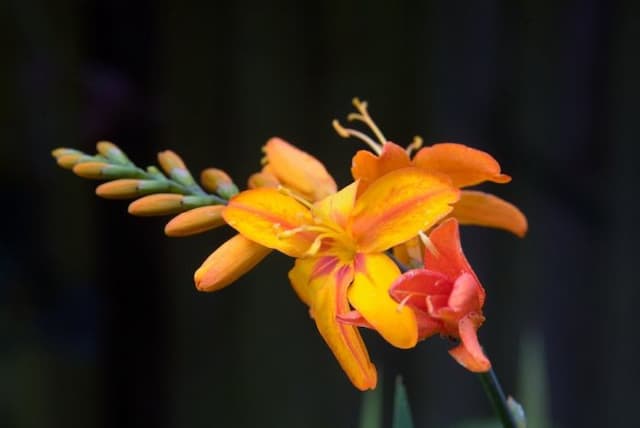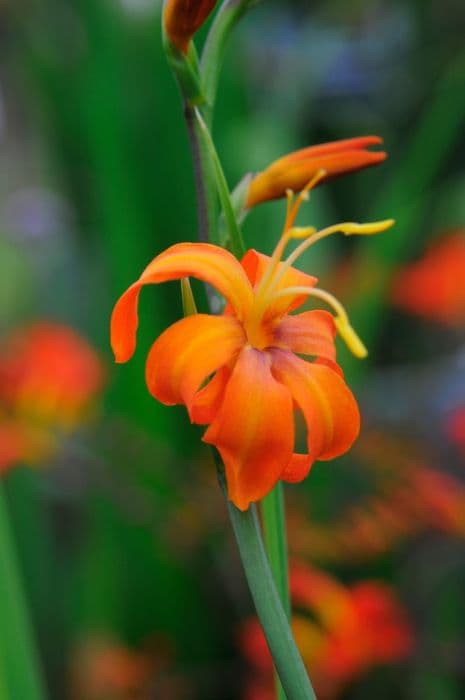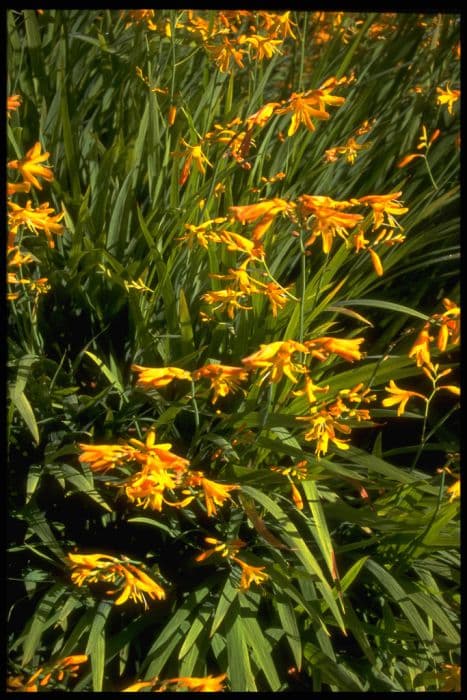Tall Bearded Iris Iris 'Paradise Bird' (TB)

ABOUT
Iris 'Paradise Bird' is a stunning flowering plant known for its striking appearance, which features enchanting blossoms that are sure to capture the attention of any onlooker. The flowers are characterized by their unique coloration, which resembles the flamboyant plumage of an exotic bird. The petals display a blend of bright colors, typically with a mixture of warm tones like oranges, reds, and yellows that can vary in intensity, sometimes with cooler blue or purple accents. These flowers prominently showcase three large, upward-standing petals known as standards, along with three downward-curving petals called falls, which often display a contrasting pattern or coloration, such as a striking beard or bright flecks and veining, enhancing their visual appeal. The foliage of this plant consists of long, sword-like leaves that are elegantly arranged in a fan-like formation, providing a lush green backdrop that foregrounds the spectacular blooms. The leaves are somewhat stiff and can add a textural element to the garden even when the plant is not in bloom. The flower stems rise majestically amongst the leaves, each stem boasting several buds that open in succession over the blooming period. The overall appearance of Iris 'Paradise Bird' is a display of vivid, bold hues and a classic iris form that exemplifies the drama and beauty often associated with these popular garden plants.
About this plant
 Names
NamesFamily
Iridaceae
Synonyms
Tall Bearded Iris, Bearded Iris
Common names
Iris 'Paradise Bird' (TB)
 Toxicity
ToxicityTo humans
The Tall Bearded Iris, which includes the 'Paradise Bird' cultivar, is not typically considered toxic to humans. However, ingestion of its rhizomes (the underground stems), and sometimes other plant parts, can cause stomach upset, with symptoms like nausea, vomiting, and diarrhea. Handling the plant could also lead to skin irritation in some individuals due to its mild saponins content.
To pets
For pets, the Tall Bearded Iris, or 'Paradise Bird', can be harmful if ingested. The rhizomes contain compounds that can cause gastrointestinal irritation, leading to symptoms such as drooling, vomiting, abdominal pain, and diarrhea. It is particularly toxic to cats and dogs, so it is important to prevent pets from chewing on any part of the plant.
 Characteristics
CharacteristicsLife cycle
Perennials
Foliage type
Deciduous
Color of leaves
Green
Flower color
Mixed
Height
2-3 feet (60-90 cm)
Spread
1-2 feet (30-60 cm)
Plant type
Bulb
Hardiness zones
Varies
Native area
Varies
Benefits
 General Benefits
General Benefits- Ornamental Value: Adds aesthetic beauty to gardens with its striking flowers that feature a unique blend of colors.
- Landscape Design: Can be used effectively in borders, mixed beds, and as a focal point due to its height and bloom.
- Drought Resistance: Once established, it can withstand periods of low water, which is beneficial in xeriscaping or regions with water restrictions.
- Low Maintenance: Requires minimal care beyond initial planting and occasional division, making it ideal for busy gardeners.
- Attracts Pollinators: The flowers attract beneficial insects like bees and butterflies, aiding in the pollination of the garden.
- Cold Hardy: It can survive in colder climates, making it a suitable perennial for many temperate gardens.
- Seasonal Interest: Provides a burst of color in late spring to early summer, enhancing the garden's seasonal progression.
 Medical Properties
Medical PropertiesThis plant is not used for medical purposes.
 Air-purifying Qualities
Air-purifying QualitiesThis plant is not specifically known for air purifying qualities.
 Other Uses
Other Uses- The tall bearded iris can be used as a natural dye source, with different parts of the plant producing various shades on textiles, ranging from soft yellows to deep purples.
- Iris rhizomes have historically been used in potpourri to add a delicate scent as well as acting as a fixative to prolong the overall fragrance.
- Photographers and artists may find the strong, architectural lines of the iris plant ideal for practicing composition and studies in light and shadow.
- Pressed iris flowers can be used in decorative craft projects, such as in greeting cards, bookmarks, or framed botanical art.
- The striking appearance of the iris can inspire fashion designers, leading to patterns and prints that reflect the unique coloration and form of the flower.
- In landscaping, irises can be used to stabilize soil and prevent erosion due to their root systems and preference for waterside environments.
- The iris can serve as a seasonal indicator in a garden, signaling springtime when it first blooms, which can assist in phenological observations.
- Bearded irises can be planted in a cut-flower garden, specifically grown for creating floral arrangements and bouquets due to their long vase life.
- Some cultures use the iris plant symbolically in ceremonies, such as weddings or funerals, to represent wisdom, hope, or valor.
- Educators can use the life cycle of the iris plant as a teaching tool in botany classes to demonstrate plant growth, reproduction, and genetics, due to its distinct hereditary characteristics.
Interesting Facts
 Feng Shui
Feng ShuiThe Iris is not used in Feng Shui practice.
 Zodiac Sign Compitability
Zodiac Sign CompitabilityThe Iris is not used in astrology practice.
 Plant Symbolism
Plant Symbolism- Faith – The Iris 'Paradise Bird' is often associated with faith, symbolizing hope and belief in oneself and higher powers.
- Wisdom – Historically, irises are seen as a symbol of wisdom and intelligence, often used to convey messages of knowledge.
- Valor – Irises can also represent courage and admiration, celebrating brave actions and heroism.
- Purity – With their vibrant bloom, they symbolize purity and innocence, commonly used in religious ceremonies and weddings.
- Royalty – In ancient civilizations, irises were symbolic of royalty and power, used to adorn the realms of kings and queens.
 Water
WaterBearded Iris should be watered deeply but infrequently to encourage deep root growth. They require approximately an inch of water every week, which could translate to about 0.6 gallons for a standard garden area if there's no significant rainfall. It's essential to let the soil dry out between watering to prevent rot. The best method is to water at the base of the plant, avoiding overhead watering to prevent disease. During the hot summer months, you may need to water twice a week, but always check the soil moisture first.
 Light
LightBearded Irises thrive in full sun conditions, requiring at least six hours of direct sunlight each day. Plant them in a spot where they are exposed to early morning sun, which dries dew quickly from their foliage, helping to prevent disease. Avoid heavily shaded areas as insufficient sunlight can lead to poor blooming.
 Temperature
TemperatureBearded Iris does well in a temperate climate and can tolerate temperatures from as low as 5°F during winter dormancy to as high as 90°F during the growing season. The ideal growing temperature range for this Iris variety is between 55°F and 75°F. They require a period of cold dormancy to bloom well in the spring, so winter chill is important.
 Pruning
PruningPruning your Bearded Iris involves cutting back the flower stems after blooming. This helps direct energy back into the rhizomes for next year's growth. Remove any brown or damaged leaves to keep the plant looking tidy and to prevent fungal diseases. Pruning is typically done immediately after bloom, or in late summer when you can also divide the rhizomes if necessary.
 Cleaning
CleaningAs needed
 Soil
SoilThe Tall Bearded Iris 'Paradise Bird' prefers well-draining, loamy soil with a slightly acidic to neutral pH of 6.5-7. A good soil mix can be achieved by adding organic matter such as compost to improve soil structure and nutrients. The soil should be fertile but not overly rich, as too much nitrogen can impede blooming.
 Repotting
RepottingTall Bearded Iris 'Paradise Bird' typically does not need to be repotted, as they are not grown in containers. However, they should be divided every 3 to 5 years to maintain vigor and prevent overcrowding.
 Humidity & Misting
Humidity & MistingTall Bearded Iris 'Paradise Bird' is tolerant of a range of humidity levels and does not require high humidity to thrive. Outdoor ambient humidity is generally sufficient for this plant.
 Suitable locations
Suitable locationsIndoor
Provide bright light and good airflow for Tall Bearded Iris indoors.
Outdoor
Plant in full sun, ensure well-draining soil for Tall Bearded Iris.
Hardiness zone
3-9 USDA
 Life cycle
Life cycleThe life of Iris 'Paradise Bird' (Tall Bearded Iris) begins with seed germination, where it establishes a root system and produces its first leaves. It subsequently enters a vegetative growth phase, developing a strong rhizome and additional foliage. This is followed by the flowering stage, typically in late spring to early summer, where it unveils its striking flowers. After pollination and flower withering, the plant enters a phase of seed maturation, where seed pods are developed and eventually scatter to produce new plants. The Tall Bearded Iris then goes into a period of dormancy during late summer and fall, especially in cooler climates. The cycle recommences with vegetative growth the following spring, where the rhizome may also produce new offshoots, expanding the size of the Iris cluster.
 Propogation
PropogationPropogation time
Late Summer to Fall
Propogation: Iris 'Paradise Bird', commonly known as the Tall Bearded Iris, is typically propagated through division, which is best done in late summer after blooming has finished, usually from July to September. To propagate by division, carefully lift the clump of irises out of the ground with a spade or fork. Gently shake or wash off the soil to reveal the rhizomes, which are horizontal underground stems characteristic of irises. With a clean, sharp knife, cut the rhizomes apart, ensuring each section has at least one fan of leaves and healthy roots. Trim the leaves to about one-third of their height, which is roughly 4 to 6 inches (about 10 to 15 centimeters), to reduce water loss and make handling easier. Replant the divisions promptly, setting the rhizome just at or slightly below the soil surface, spacing them about 12 to 24 inches apart (30 to 60 centimeters) to give them space to grow. Water the new plantings well to help establish them.
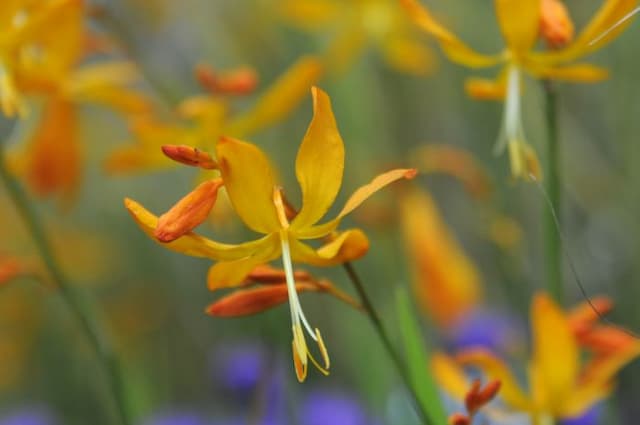
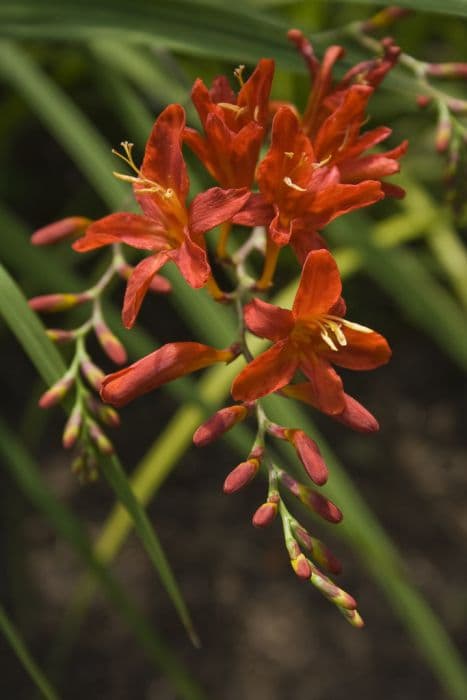
![Montbretia [Bright Eyes]](/_next/image?url=https%3A%2F%2Fplants-admin.emdemapps.com%2Fimages%2Fplants%2F%2Fimages%2F604b5f4a483b6.png&w=640&q=75)
